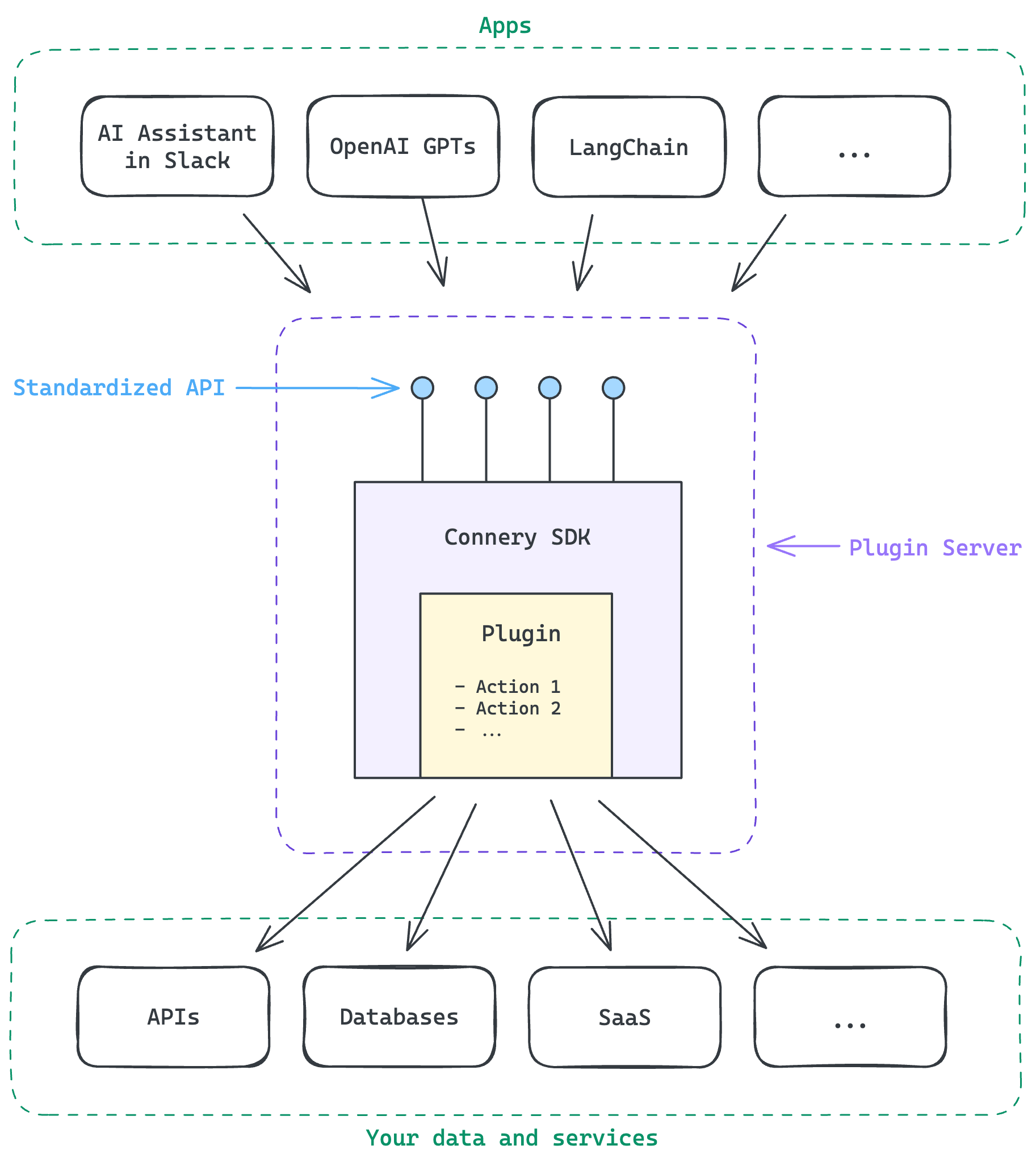The Connery SDK is an NPM package that combines an SDK and a CLI, designed to streamline the development of plugins and actions for AI apps.
The CLI automates the development process, while the SDK provides a JavaScript API for defining plugins and actions. It also simplifies packaging them into a plugin server with a standardized REST API generated from metadata. The plugin server takes care of authorization, input validation, and logging, allowing you to focus on the core logic of your actions.
This standardized API ensures that various apps can interact with actions in a consistent way, regardless of their implementation.
An action consists of JavaScript code that defines its logic and metadata describing its input and output. Actions can interact with external APIs, databases, or other services.
For example, Send email is an action in the connery-io/gmail plugin.
Initialize a new plugin with a sample action:
npx connery@latest dev initInstall the dependencies:
npm installRun the plugin server:
npm startExplore the plugin in a browser and use it in AI apps.
👉 Check out the full quickstart guide to learn more.
Please give the repository a star to support the project and stay up-to-date with the latest news.
Check out the documentation to learn more.
Connery is still in early beta, so not everything is perfect yet. Please let us know of any suggestions, ideas, or bugs you encounter, and we will use your feedback to improve our upcoming releases.
You can reach us via the following channels:
- Discussions - for feedback, questions, and discussions.
- Issues - for bug reports and feature requests.
- Twitter - for updates and announcements.
This is a monorepo that contains the following components:
| Name | Path | Description |
|---|---|---|
| SDK & CLI | ./packages/connery |
The connery package that contains both the SDK and CLI for plugins and actions development. |
| Docs | ./docs |
The documentation website. |
We are open to contributions, whether it be in the form of a new feature, improved infrastructure, or better documentation.
For detailed information on how to contribute, see our contributing guide.




